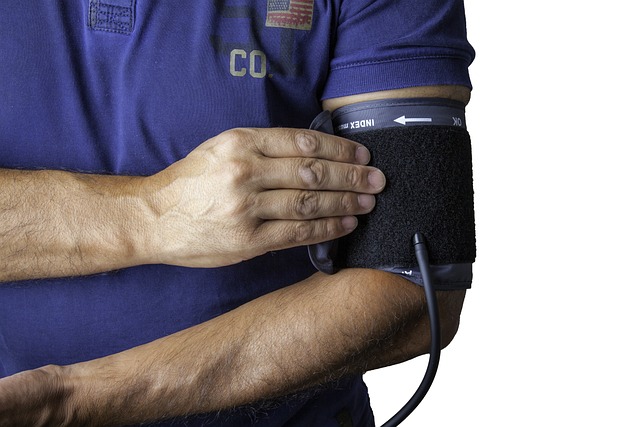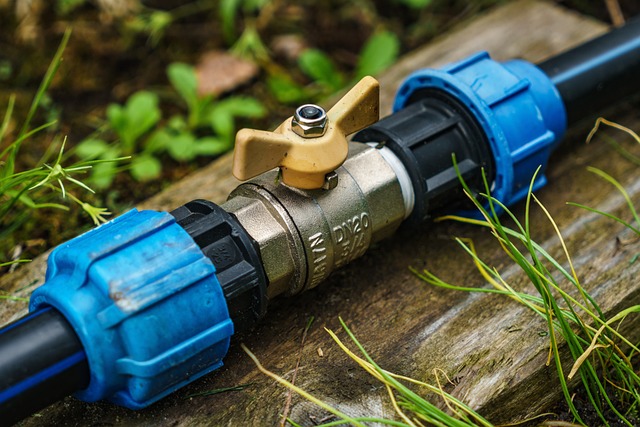Low water pressure in homes is primarily caused by leaks, corrosion, or blockages in plumbing systems, leading to weaker showers and inefficient cleaning. Identifying these issues is crucial for repairing potential long-term damage and restoring optimal water pressure for household use.
Low water pressure can be a frustrating issue, impacting daily routines from taking a shower to running household appliances. Understanding the root causes behind this problem is key to effective troubleshooting. This article delves into the top three culprits driving low water pressure: leaks, corrosion, and blockages. By exploring these common issues in detail, we equip you with the knowledge to diagnose problems and implement solutions for restored optimal water pressure.
- Understanding Low Water Pressure: Common Issues Unveiled
- – Definition and impact of low water pressure
- – Identifying symptoms and when to seek help
Understanding Low Water Pressure: Common Issues Unveiled

Low water pressure is a common household issue that can be frustrating and inconvenient. Understanding the causes behind this problem is the first step in finding effective solutions. In many cases, it’s not just one single factor but a combination of issues that lead to reduced water flow.
The most prevalent causes of low water pressure include leaks, corrosion, and blockages. Leaks can occur in pipes, fixtures, or appliances, leading to water waste and significant pressure drop. Corrosion builds up over time due to mineral deposits or outdated plumbing materials, narrowing the pipe walls and restricting water flow. Blockages, caused by mineral buildup, grease, or debris, can completely obstruct the water path, resulting in minimal or no pressure. Identifying these issues is crucial in addressing low water pressure effectively.
– Definition and impact of low water pressure

Low water pressure is a common household issue that can significantly impact daily routines, from taking a shower to running appliances. It refers to a reduction in the force or velocity at which water flows through pipes and fixtures, often resulting in a weaker than expected spray or a trickle rather than a robust flow. While it may seem like a minor inconvenience, low water pressure can have various causes, affecting both residential and commercial properties. Understanding these causes is crucial when troubleshooting and addressing the issue effectively.
The impact of low water pressure extends beyond an inconvenient shower experience. It can lead to longer wait times for hot water, reduced cleaning efficiency in kitchens and bathrooms, and even potential damage to plumbing systems over time. In many cases, it may indicate issues such as leaks, corrosion, or blockages within the plumbing network, which are among the most common causes of low water pressure. Identifying and addressing these underlying problems is essential to restore optimal water pressure and ensure a steady supply for all household needs.
– Identifying symptoms and when to seek help

Low water pressure can be a frustrating issue, often indicating underlying problems that require attention. Identifying the symptoms is the first step in addressing this challenge. One of the most noticeable signs is a decrease in water flow from fixtures like faucets and showers. You might experience a weak spray or even struggle to get water to flow at all. This could be accompanied by reduced water pressure in multiple fixtures, indicating a systemic issue rather than a localized problem.
If you notice these symptoms, especially if they are persistent, it’s time to investigate further. Causes of low water pressure can range from simple blockages in pipes to more complex issues like leaks or corrosion. In some cases, an old or faulty water pressure regulator might be the culprit. Seeking professional help is advisable if the problem persists, as experts can diagnose and fix these issues effectively, ensuring your water system operates at its optimal pressure once again.
Low water pressure can significantly impact our daily routines, from taking a shower to doing laundry. Understanding the common causes, such as leaks, corrosion, and blockages, is crucial in addressing this issue promptly. By identifying these problems through symptoms like reduced flow rate or decreased water temperature, homeowners can take proactive measures. Regular maintenance and prompt repairs can prevent long-term damage and ensure consistent water pressure for all household needs.
